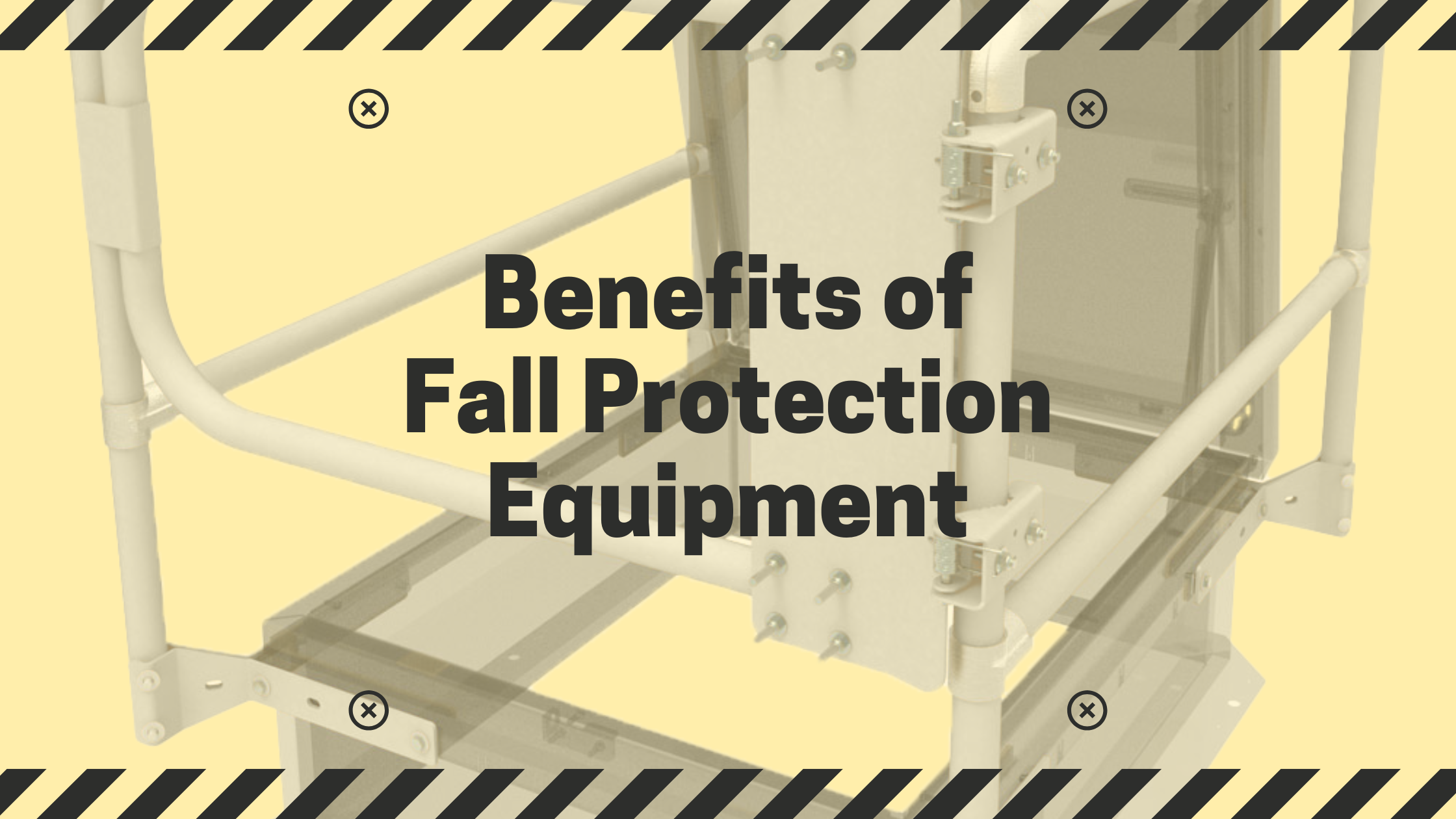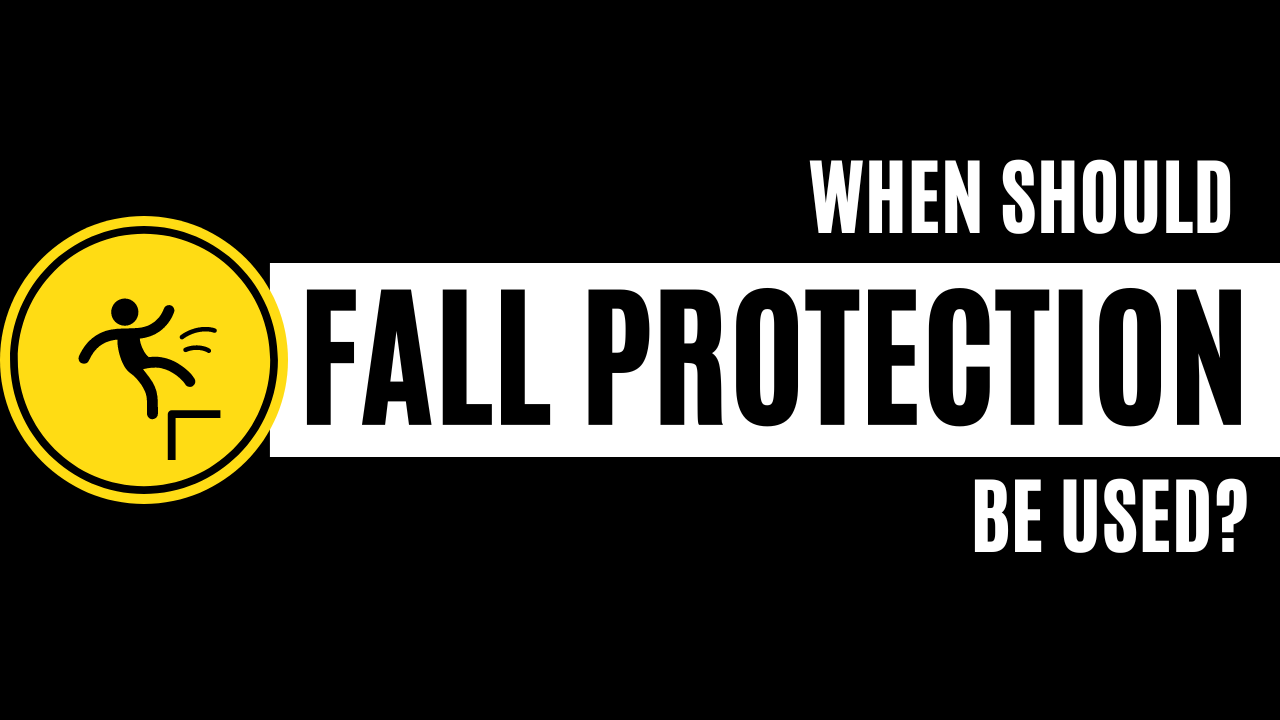Don't Be A Statistic
.png)
According to OSHA,
one of the top causes of construction deaths is from falls. Fall protection is the most frequently violated standards. One way to mitigate these risks is through the installation and use of fall protection safety products. In this article, we will discuss seven ways to add safety to your building.
-
The first, and easiest way to add safety to your roof hatch is to keep the cover shut when not in use. When the door is closed there is no available opening for people, tools, or equipment to fall into. Additionally, this will reduce the possibility of the door and components being damaged by wind.
-
Install guardrails: Installing guardrails around the perimeter of a building's roof or any other areas that are at risk for falls can help prevent accidental falls. Guardrails should be made of sturdy materials and be able to withstand a certain amount of force. Corral Guardrails. The Corral Guardrail is a hybrid of the traditional roof hatch safety railing and the Weighted Base Guardrail system. Available with an automatic closure gate
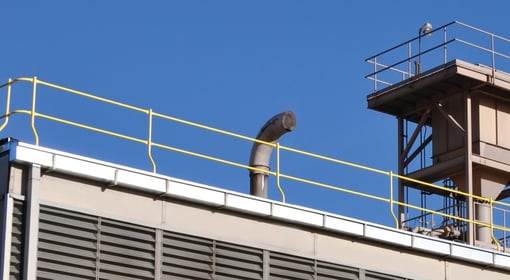 or zinc-coated chain closure. The corral system is most often utilized with a roof hatch within 10 feet of the building edge. Or you can install Roof Hatch Safety Railings. These railings are designed specifically to fit roof hatches. These are generally available with a chain closure or a spring-loaded gate that automatically closes. When installed properly, the safety railing guards the opening of the roof hatch to prevent people from falling into the roof hatch while on a rooftop.
or zinc-coated chain closure. The corral system is most often utilized with a roof hatch within 10 feet of the building edge. Or you can install Roof Hatch Safety Railings. These railings are designed specifically to fit roof hatches. These are generally available with a chain closure or a spring-loaded gate that automatically closes. When installed properly, the safety railing guards the opening of the roof hatch to prevent people from falling into the roof hatch while on a rooftop. 

-
Use safety nets: Safety nets can be installed beneath work areas where workers are at risk for falls. These nets can help catch workers if they fall, preventing them from hitting the ground and potentially suffering serious injuries. Nets with 5000 Lb. breaking strength may also be installed in floor door openings. Grating options will provide permanent fall protection to reduce risks associated with falls.
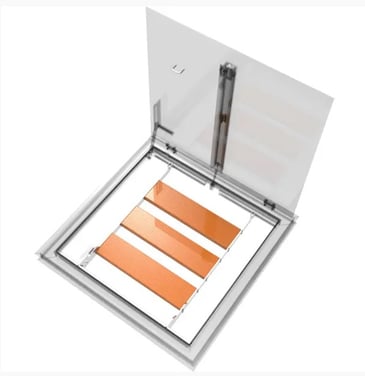
- Use roof hatch safety equipment: Utilize a Ladder Safety Post. The ladder safety post is attached to a vertical ladder that telescopes up when the roof hatch is open. The use of the post allows leverage for personnel when entering and exiting the hatch as there are typically no places to hold on to. Or you can use Safety Grab Bars. The Safety Grab Bars are mounted to the outside counterflashing of the roof hatch. Similar to the Ladder Safety Post, the Grab Bars allow for leverage, gripping, and stabilization while entering and exiting a personnel roof hatch. The grab bar can be added to one corner, or to two.
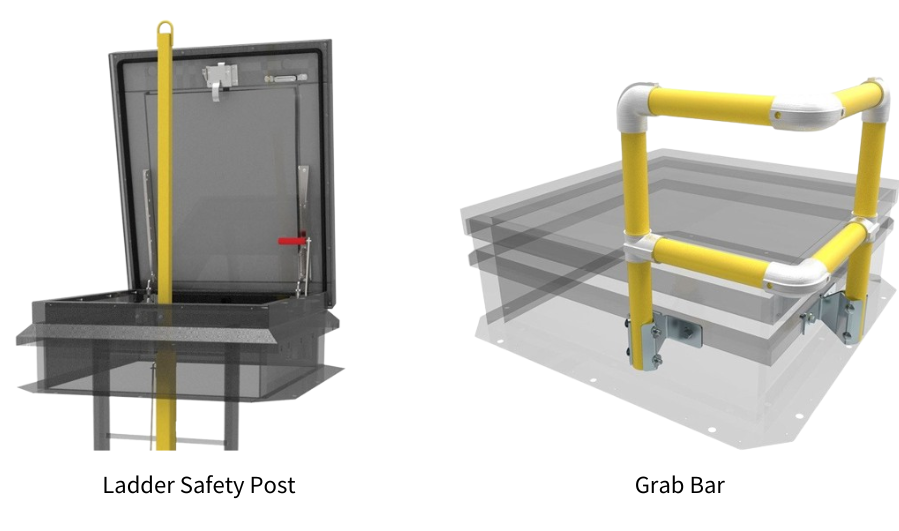
-
Implement a fall arrest system: A fall arrest system typically includes an anchorage point, a body harness, and a lanyard. If a worker falls, the lanyard will deploy and stop the fall before the worker hits the ground. This can be an effective way to protect workers who are working at heights.
-
Provide adequate training: Proper training can help workers understand the risks associated with working at heights and teach them how to use fall protection equipment correctly. Workers should be trained on how to properly use any equipment, including harnesses, ropes, and lanyards. For more information on OSHA fall protection training, visit the website.
-
Conduct regular inspections: Regular inspections of fall protection equipment can help identify any defects or issues that could compromise worker safety. Employers should also regularly inspect the work environment to ensure that all areas are free of potential hazards. Access the OSHA Employer Fall Prevention Training Guide here.
Nystrom understands building codes, regulations, and common industry practices when dealing with roof hatches, smoke vents, and floor door fall protection safety products. For more information on our products or to speak with a Sales & Customer Service Representative, please visit our website.

